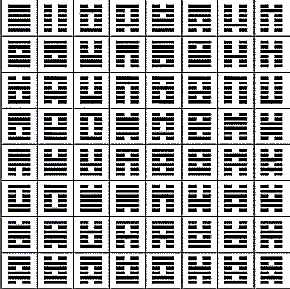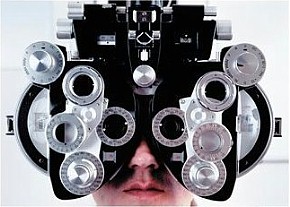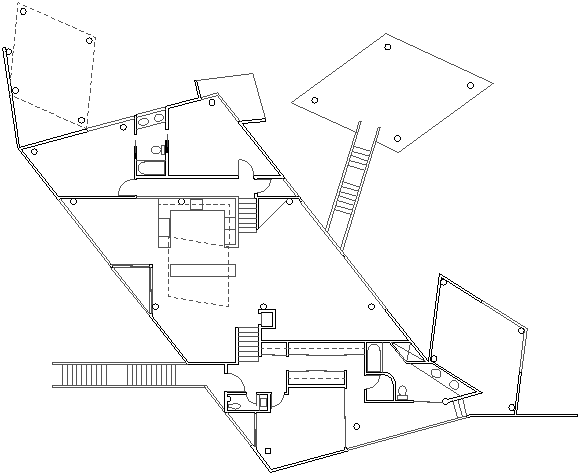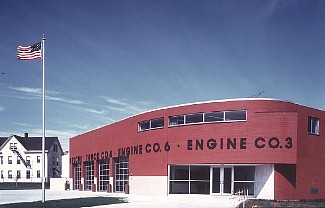2008.07.16 17:25
bored with modern & contemporary, yet?
"In the past Eisenman has often been criticized for his reliance on concepts from outside of architecture. With this analytical work he declares explicitly that it is buildings themselves that are the source of ideas in architecture, and not applied philosphical concepts from outside the discipline"
--Stan Allen, "Eisenman's Canon: A Counter-Memory of the Modern" in Ten Canonical Buildings 1950-2000.
Leave to Allen and Eisenman to now 'declare' what is has otherwise always been one of architecture's most self-evident features.
Eyes which do not see, indeed.
The first chapter of Wittkower's Architectural Principles in the Age of Humanism is entitled "The Centrally Planned Church and the Renaissance". Good stuff about the theoretical origins of the centrally planned church and its practice; not much about any "true debate" nor popes.
beginning of the last paragraph:
The new interpretation of religious architecture was soon to be challenged. Carlo Borromeo in his Instructionum Fabricae ecclesiasticae et Superlectilis ecclesiasticae Libri duo of about 1572, applied the decrees of the Council of Trent to church building; for him the circular form was pagan and he recommended a return to the 'formam crucis' of the Latin cross.
2008.07.31 15:29
eisenman
...if you do intern at Eisenman, bone up on the I Ching before you get there, and then let it be known that the I Ching is one of your avocations via demonstrations of your meaningful chancyness. You'll have a blast!

| |
2008.08.08 13:27
The arrogance of 'Architects'
In the Ichnographia Campo Martius "certain landmarks remained: the Tiber River, the Piazza Navona, and a Colosseum-like structure, which was in the wrong location and, in a sense, at the wrong scale."
--Peter Eisenman, "Piranesi and the City" (2007).
In fact, the 'Colosseum-like structure' is clearly labeled Amphitheatum Statilii Tauri, positioned by Piranesi in its most likely location, and delineated at about 2/3rds the size of 'the Colosseum' which is probably what the Amphitheater of Statilius Taurus was.
Eisenman's misrepresentation of the facts here is somewhat compounded in that Wilton-Ely had already years earlier noted the presence of the Amphitheater of Statilius Taurus within Piranesi's Campo Marzio.
Eisenman inerpretes Piranesi's Ichnographia Campus Martius in several self-serving ways, but he never comes to realize that on one level the Ichnographia Campus Martius is a gigantic test of Ancient Roman topography.

"Hey Doctor. I don't know what you want me to see, but this thing I'm looking through looks like some plan from Piranesi's Campo Marzio.
2008.08.22 22:05
Peter's canon
Just did a side by side chronological overview of the work of Gehry and Eisenman, and in terms of architectonic, geometrical experimentation, Gehry manifests a greater and more mature repertoire.
Eisenman goes through a lot of intellectual and theoretical rigor to ultimately arrive at his geometry, but Gehry simply demonstrates that the intellectual and theoretical rigor isn't even necessary when it come to unprecedented architectonic geometries.
The only reason Eisenman's approach gets respect is because it fits well into 'higher' education. To have students pay large amounts of money to then learn that, "Hey, just look at Gehry, you can design pretty much anyway you want these days." just wouldn't go over well.
| |
2008.08.23 21:06
Peter's canon
Personally, I like seeing all the study models of various projects by various architects. I like it because it clearly demonstrates just how pliant architectural designing can be. And I seriously consider the notion that it may well be Gehry that best introduced architectonic pliancy to the profession.
Is architectonic pliancy in somewhat sharp contrast to Eisenman's method? Up to a certain point (in time) I'd say yes. And when Eisenman's work started exhibiting some measure of pliancy, that's where I start to see Gehry's influence.
Have Gehry's designs of late become somewhat predictable and/or seemingly uninspired? Perhaps the pliability metaphor applies here too; perhaps the pliancy has been lost for being stretched too much and too far.
Another thing I like about all the study models is that so often almost any one of the models looks to be an exciting and/or interesting building. And often too it is within the collection of study models that one finds the riskier designs. "Getting it right" isn't the only operation going on. There's also a having-to-let-go of good designs.
2008.08.23 22:55
Peter's canon
To suspect that Eisenman's process conceals a much more pliant process doesn't eliminate Gehry's already self-evident very pliant process. Gehry's entire oeuvre is evidence of a very pliant design process.
Has Eisenman really been designing a process? It looks to me more like he's been designing a determinism, and I am personally aware of an aspect of Eisenman's process that proves very inflexible.
2008.08.26 11:32
"wildly influential" or really only virtually influential?
[Woods'] "designs were wildly influential, closely studied by younger architects who sought to apply their ideas in the real world."
"It is my firm opinion that Eisenman is the most influential American architect of the last half of the 20th century."
and yet...
"Has the profession (and increasingly architecture is a profession not a discipline, incapable of a critical or even intelligent discourse) produced any architecture of value in the last decade? Not much."
influence : the capacity or power of persons or things to be a compelling force on or produce effects on the actions, behavior, opinions, etc., of others
So how exactly does one quantify the influence of Woods and Eisenman?
or
If Woods and Eisenman are indeed so influential, then perhaps they should be held accountable.
2008.10.19
chapters of AinCC
1. [sic]
2. To Err with SuperGlue(TM)
3. Bilocation Syndrome
4. Going into Eclectic Shock
5. Surgical Double Theater
6. Waiting Room: Anxious, Reading, Liszt
7. Operation a Sucess; Patient Dead
8. Malpractice Case: House
9. Eternal Wrest
To ERr w/SG could be the whole Eisenman as Piranesi expose and an unraveling (somewhat) of Tafuri's interpretation (of the Campo Marzio). The missing notion of reenactment within "dans le boudoir" could happen here.
| |
2009.11.18 13:40
The current state of Architecture Theory
Is it Eisenman's words, or Eisenman's designs that might of made the likes of UNStudio, FOA and Lynn possible?
2009.11.27 12:10
The current state of Architecture Theory
an (experimental inclined toward intuitive) architectural theory:
architectural design falls into three types:
intuitive architectural design
theoretical architectural design
experimental architectural design
with the three types forming a triade, thus each type can incline towards one or the other.
e.g.
the architecture of Frank Gehry -- intuitive architectural design inclined toward experimental architectural design
the architecture of Peter Eisenman -- experimental architectural design oscillating between theoretical and intuitive architectural design
the architecture of Le Corbusier -- theoretical architectural design oscillating between experimental and intuitive architectural design
Gothic architecture -- experimental architectural design inclined toward intuitive architectural design
Beaux Arts architecture -- theoretical architectural design oscillating slightly between experimental and intuitive architectural design
the architecture of Louis I. Kahn -- started as theoretical architectural design and ended as experimental architectural design inclined toward intuitive architectural design
the architecture of H&dM -- experimental architectural design inclined toward intuitive architectural design
the architecture of UNStudio -- theoretical architectural design inclined toward experimental architectural design
[to be continued]
2011.01.01 11:29
Gehry @ Sydney
Anyone else remember Eisenman's proposal for development around Ground Zero from 2002?
I can't tell if the genetic pool is shrinking or expanding.
Q: Which came first, repetition or difference?
A: A reenactment of a reenactment turned sideways.
The "teen" years = wise-ass architecture.
2011.01.31 11:36
READING LIST
[Read 2226 last Autumn. The most satisfying novel I've read in quite some time. The experience somewhat reminded me of reading Joseph and His Brothers in 1982. Bolano's rendition (in part four) of the disintegration of the eastern front at the end of WWII was uncannily similar to how my father described that situation to me as we were driving through (what is now part of) Poland, in May 1990, back to his family farm which was confiscated by Russians sometime early Spring 1945.]
Since last Thursday, I'm reading Pier Vittorio Aureli's forthcoming (probably March 2011) The Possibility of an Absolute Architecture. Quite by chance, if not indeed by accident, I'm in possession of a proof copy released for review December 2010. So far I've read the chapter on Piranesi, "Instauratio Urbis: Piranesi's Campo Marzio versus Nolli's Pianta di Roma" (twice), and the chapter on Boullée, "Architecture as a State of Exception: Étienne-Louis Boullée's Project for a Metropolis". When I first found the book available, I had no idea as to its contents. Needless to say, however, I was more than pleasantly surprised to find a whole chapter devoted (at least in name) to Piranesi's Ichnographia Campus Martius. Alas, Aureli doesn't really say much about the Ichnographia itself, at least nothing that Peter Eisenman hasn't already said. In fact, Aureli has written what amounts to something like an apologia for Eisenman's notion that the Ichnographia must be viewed in opposition to Nolli's plan of Rome and thus represents architecture as autonomous. Strange though, however, that while Eisenman is [re]cited virtually verbatim, there is no direct reference to Eisenman within the text or the notes--although, The Possibility of an Absolute Architecture is part of the Writing Architecture series which is a project of the Anyone Corporation.
[Here's where I will relate pages 54-62 of Eco's The Limits of Interpretation.]
[The Scenograpia shows all that's left of ancient Rome within the Campo Marzio, and the Ichnographia shows us 1000 years of ancient Rome's Campus Martius all at the same time.]
After finishing Instrauratio Urbis a second time this morning, I then got out Bufalini'a map again, and made another discovery--the 'O' of ROMA along the top of Bufalini's map corresponds with Piranesi's placement of the spiraling oval of the Naumachia Domitiani. Piranesi is probably laughing right now.
Regarding Boullée, it is unfortunate that Aureli does not relate Boullée's architecture back to Piranesi's architecture of the Campo Marzio, especially in terms of planning and gigantism.
| |
2011.02.01 11:38
READING LIST
Umberto Eco's The Limits of Interpretation is almost completely available online. I've read half of it over the beginning of winter holidays, and plan to read the rest soon. As already mentioned, I see the texts of pages 54-62 germane to a critique of Aureli's "Instauratio Urbis: Piranesi's Campo Marzio versus Nolli's Pianta di Roma":
"...a convenient opposition between interpreting (critically) and merely using a text. To critically interpret a text means to read it in order to discover, along with our reaction to it, something about its nature. To use a text means to start from it in order to get something else, even accepting the risk of misinterpreting it from the semantic point of view."
Eco, p. 57.
Aureli and Eisenman use Piranesi's Ichnographia Campus Martius as a defense of their own beliefs of autonomous and/or absolute architecture, and indeed manifest misinterpretations (e.g. "Piranesi reinvented Rome as a city without streets.", Aureli, p. 137.) because they continue to ignore critical interpretations that have manifest many discoveries as to the actual nature of Piranesi's Ichnographia Campus Martius.
2011.12.06 21:36
Frank Gehry
2008.08.23 21:06
peter's canon
Personally, I like seeing all the study models of various projects by various architects. I like it because it clearly demonstrates just how pliant architectural designing can be. And I seriously consider the notion that it may well be Gehry that best introduced architectonic pliancy to the profession.
Is architectonic pliancy in somewhat sharp contrast to Eisenman's method? Up to a certain point (in time) I'd say yes. And when Eisenman's work started exhibiting some measure of pliancy, that's where I start to see Gehry's influence.
Have Gehry's designs of late become somewhat predictable and/or seemingly uninspired? Perhaps the pliability metaphor applies here too; perhaps the pliancy has been lost for being stretched too much and too far.
----------
pliant 1 : yielding readily without breaking : bending or folding easily
About a month ago, I purchased Constructing a New Aganda: Architectural Theory 1993-2009. The first essay in the book is "Architectural Curvilinearity: The Folded, the Pliant, and the Supple" (1993) by Greg Lynn. Upon seeing this title I immediately thought of the post above. I have little doubt that it was a long ago reading of this essay (as I used to own several books by Lynn, although now all sold off at eBay around 8 years ago) that lodged the connection of Gehry's architecture and pliancy somewhere in my brain. With the 2008 post, however, I was thinking more along the lines of the pliacy demonstrated by the plan of Gehry's Wagner House (1978)

and the 3-dimensional execution of this plan as well. I have also wondered if the peeling wall detail of a 1970-4 Venturi and Rauch project is percursor to Gehry's pliancy.

|